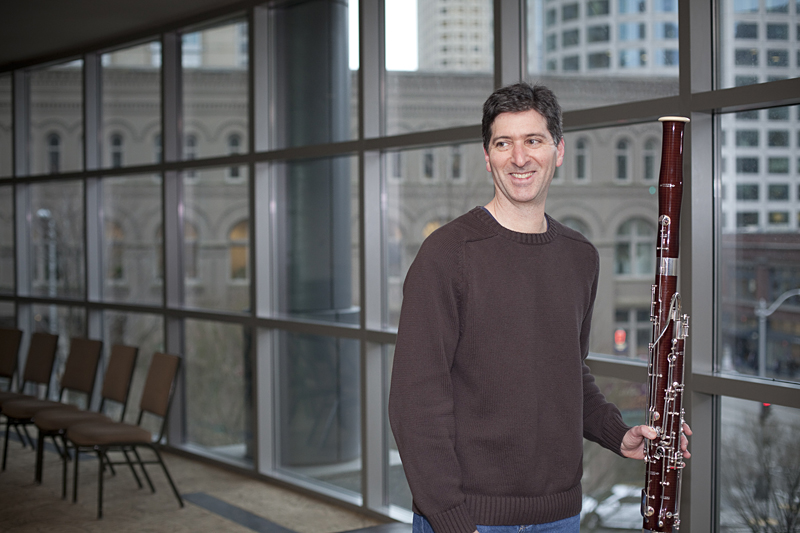The bassoon has never gotten the attention it deserves from composers—despite its historical prestige as one of the earliest woodwind instruments to become a regular member of the orchestra and its practically bipolar ability to negotiate a range of moods, from heartbreaking poignancy to slapstick clowning. Sure, it’s useful, the workhorse bass of the wind choir, but far from glamorous; not a romantic lead, but a character actor—the William H. Macy of the orchestra.
Taking matters into his own hands is bassoonist Seth Krimsky, first-chair player in the Seattle Symphony and a composer of several fascinating and groundbreaking works for his instrument. His March 4 recital at Cornish College will not only put it in the spotlight at last, but make you rethink what it can do, as a showcase for his explorations with what he calls “electric bassoon fusion madness.” Amplification and various distortion, delay, and looping effects bring a synthesizer’s worth of startling sounds out of his instrument, from spacey to raucous, growling to ethereal, evoking the sax, cello, didgeridoo, accordion, feedback-laden guitar, and more.
Krimsky grew up in Los Angeles. Not encountering the bassoon until he was 15, in a high-school music class, he nevertheless lucked into a chance to study with Norman Herzberg, USC professor and one of the country’s pre-eminent bassoon teachers. Herzberg’s experience among L.A.’s legion of studio musicians later inspired a tribute work, Krimsky’s Chaplin Avenue, a chamber concerto that sets the bassoon in an ominous, fleeting dreamscape of icy colors and mysterious gestures, with nods here and there to film-noir jazz, creepy horror-movie scurryings, and Michel Legrand closing-credits ballads.
But later at USC, an interest in early music also took shape: “My plan at the time was to go to Amsterdam like everyone else,” Krimsky says, to specialize in period performance. But the lure of more stable full-time orchestral jobs led him to Cape Town and then, starting in 1986, Seattle. Years of playing in the middle of the orchestra—high winds and strings in front, horns behind, brass and percussion off to his left—gave him an insider’s knowledge of the palette of possible instrumental colors and combinations, always a vital aspect of his music. Conversely, his composition experience, approaching music as a creator, enriched his insight as a re-creator. As he puts it, “If you’re going to play music for a living, you have to have something going on in your head.”
Varieties not only of color but of style intrigue Krimsky, which makes him right at home in an age when composers are becoming less self-conscious about perceived boundaries between musical genres. “Everything I’ve heard since I’ve started listening to music is percolating in there—it’s all going to crash into each other. Bartok kind of shows up a lot, and I’m really attached to the whole klangfarbenmelodie idea”—series of colors used as structural and expressive ideas, analogous to chord progressions or successive notes in a tune.
Consequently, his March recital will start in the 18th century and end in the 21st. Seeking an opportunity to work with lutenist Stephen Stubbs since they sat next to each other at the SSO’s 2009 Messiah, Krimsky has arranged a sort of musical smorgasbord, interleaving two cello transcriptions (a Vivaldi sonata, a Bach solo suite) and other bassoon solos with lute solos. In the second half, his electric bassoon will center a free-improv set with SSO bassist Joe Kaufman, Bill Patton on pedal-steel guitar, and drummer Steve Korn. “When we started playing,” says Krimsky, “what happened, without anybody saying anything, was it kind of turned into this late ’70s–early ’80s ECM [sound],” referring to the connoisseur-admired modern-jazz label. “Do you know those recordings?—big, open, lots of long notes. It kind of turned off into that direction by itself, kind of ambient.”







